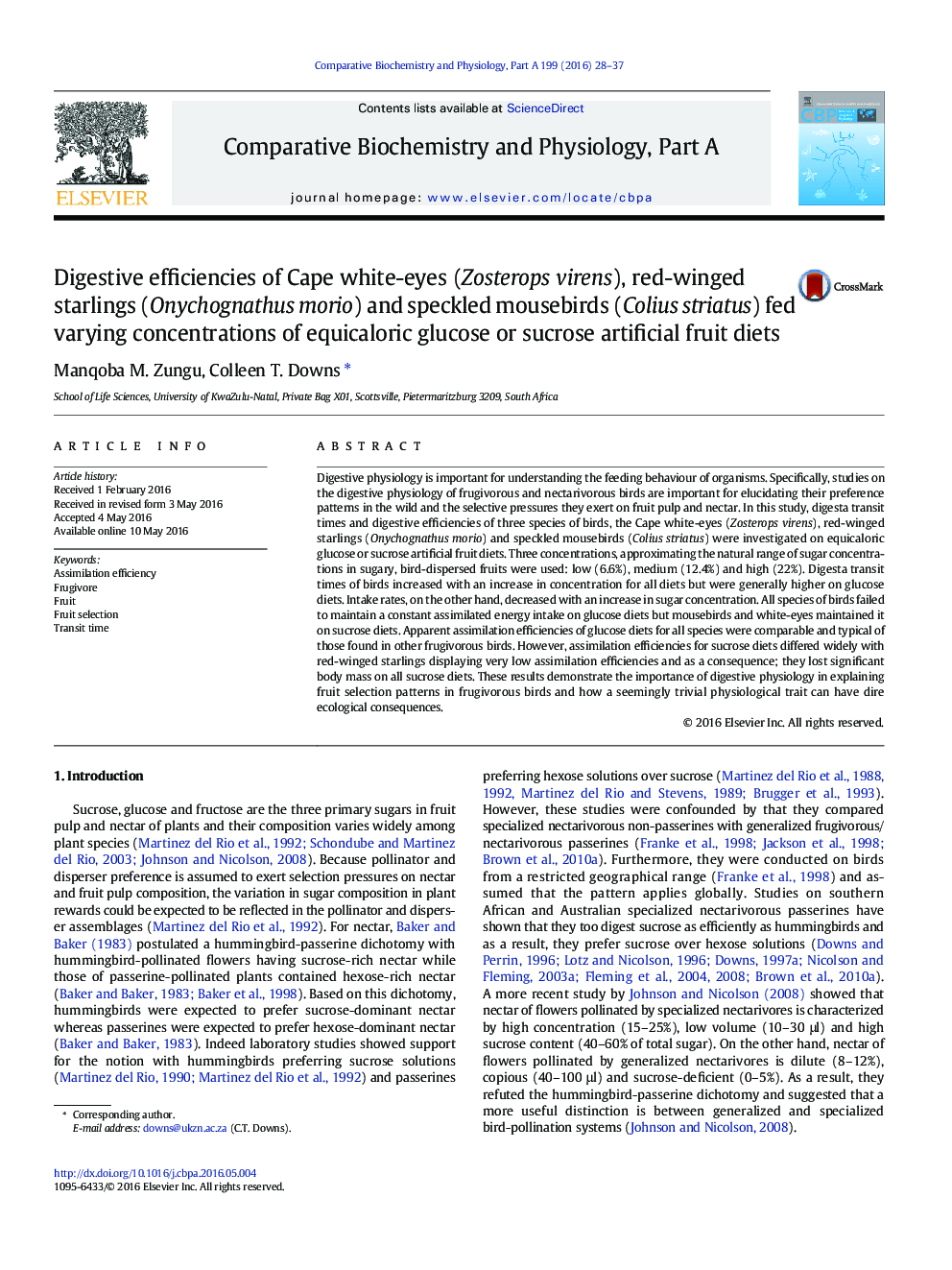| Article ID | Journal | Published Year | Pages | File Type |
|---|---|---|---|---|
| 1971800 | Comparative Biochemistry and Physiology Part A: Molecular & Integrative Physiology | 2016 | 10 Pages |
Digestive physiology is important for understanding the feeding behaviour of organisms. Specifically, studies on the digestive physiology of frugivorous and nectarivorous birds are important for elucidating their preference patterns in the wild and the selective pressures they exert on fruit pulp and nectar. In this study, digesta transit times and digestive efficiencies of three species of birds, the Cape white-eyes (Zosterops virens), red-winged starlings (Onychognathus morio) and speckled mousebirds (Colius striatus) were investigated on equicaloric glucose or sucrose artificial fruit diets. Three concentrations, approximating the natural range of sugar concentrations in sugary, bird-dispersed fruits were used: low (6.6%), medium (12.4%) and high (22%). Digesta transit times of birds increased with an increase in concentration for all diets but were generally higher on glucose diets. Intake rates, on the other hand, decreased with an increase in sugar concentration. All species of birds failed to maintain a constant assimilated energy intake on glucose diets but mousebirds and white-eyes maintained it on sucrose diets. Apparent assimilation efficiencies of glucose diets for all species were comparable and typical of those found in other frugivorous birds. However, assimilation efficiencies for sucrose diets differed widely with red-winged starlings displaying very low assimilation efficiencies and as a consequence; they lost significant body mass on all sucrose diets. These results demonstrate the importance of digestive physiology in explaining fruit selection patterns in frugivorous birds and how a seemingly trivial physiological trait can have dire ecological consequences.
